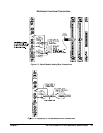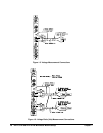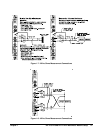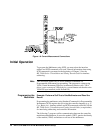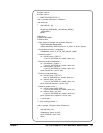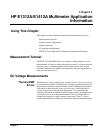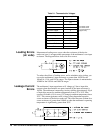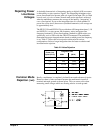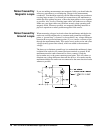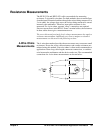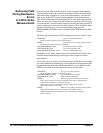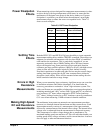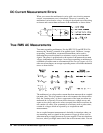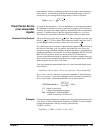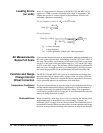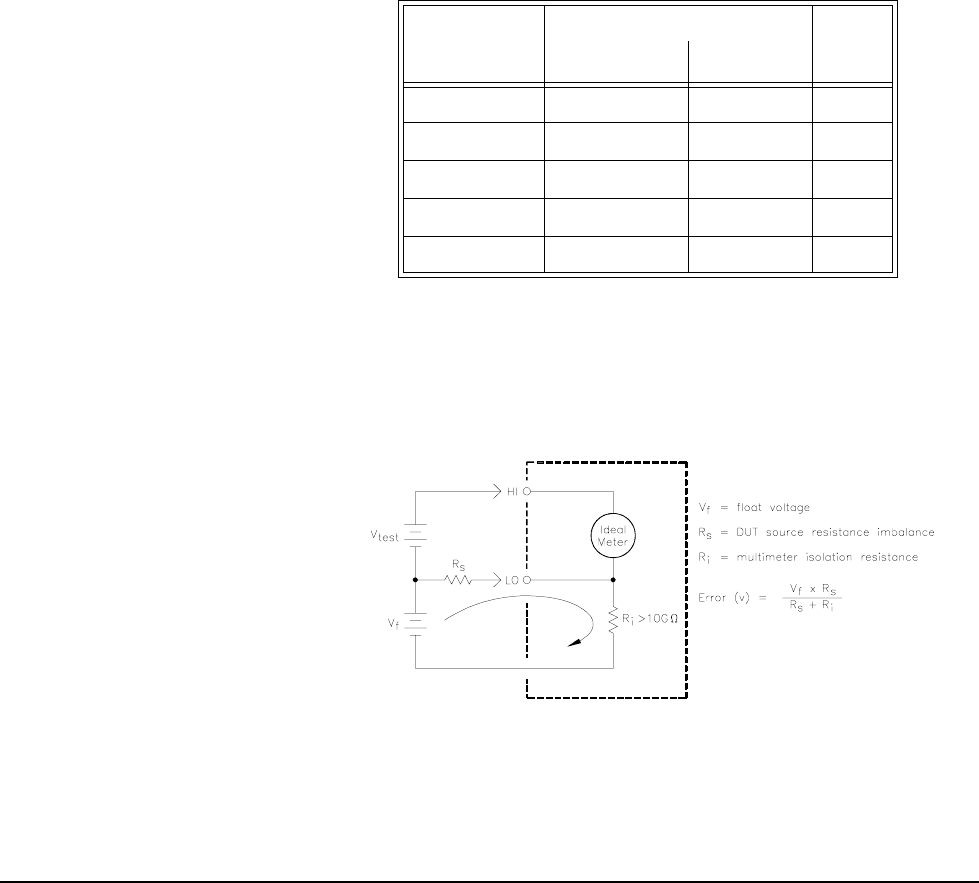
HP E1312A/E1412A Multimeter Application Information 27Chapter 2
Rejecting Power
Line Noise
Voltages
A desirable characteristic of integrating analog-to-digital (A/D) converters
is their ability to reject spurious signals. The integrating techniques reject
power-line related noise present with a dc signal on the input. This is called
normal mode rejection or
NMR. Normal mode noise rejection is achieved
when the multimeter measures the average of the input by “integrating” it
over a fixed period. If you set the integration time to a whole number of
power line cycles (
PLCs) these errors (and their harmonics) will average out
to approximately zero.
The HP E1312A and HP E1412A provide three A/D integration times (1, 10
and 100PLCs) to reject power line frequency noise (and power-line
frequency harmonics). Power line frequency defaults to 60Hz unless you
specifically set it to 50Hz with the
CAL:LFR command. The multimeter
determines the proper integration time based on which power line frequency
is set. Table 2-2 shows the noise rejection achieved with various
configurations. Select a longer integration time for better resolution and
increased noise rejection.
Common Mode
Rejection (CMR)
Ideally, a multimeter is completely isolated from earth-referenced circuits.
However, there is finite resistance between the multimeter's input LO
terminal and earth ground as shown below. This can cause errors when
measuring small voltages which are floating relative to earth ground.
Table 2-2. Noise Rejection
Power Line
Cycles (PLCs)
Integration Time
NMR
60Hz (50Hz)
0.02 400µs(400µs) NONE
0.2 3ms (3ms) NONE
1 16.7ms (20ms) 60dB
10 167ms (200ms) 60dB
100 1.67sec (2sec) 60dB



